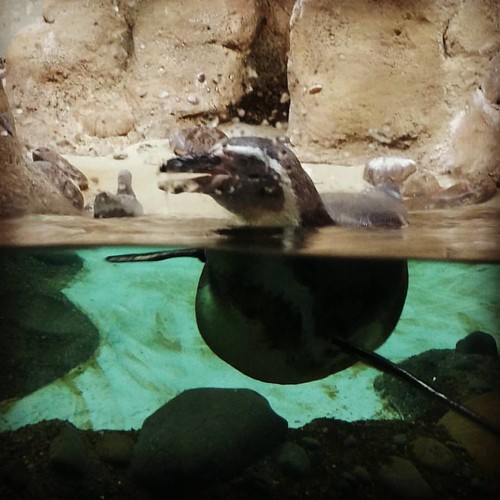To consider whether or not this pathway was included in the prevention of LPS-stimulated MCE Company Aviptadil hepatic Tnf gene amounts, mice had been pre-fed for ten times with PBS or H-LF41 singly or in mix with administration of an EP4-certain inhibitor, ONO-AE3-208 (I-EP4), or its vehicle, and the hepatic Tnf mRNA amounts in these mice established soon after LPS obstacle. Without a doubt, the EP4-specific blockade resulted in abrogation of LF41-mediated attenuation of hepatic  Tnf mRNA stages (Fig 4E). In addition, administration of PGE2 three hours ahead of LPS obstacle also substantially attenuated hepatic Tnf mRNA ranges (S3 Fig).Thanks to the significance of the upregulated hepatic PGE2, we explored the system by which H-LF41 administration enhanced hepatic PGE2 but with out modulating possibly hepatic COX-1 or COX-two expression. Considering the shut anatomical romantic relationship among the liver and intestine as well as the increased COX-2 expression and PGE2 secretion in the terminal ileum of LF41-fed mice, we hypothesized that a distinct blockade of COX-2 action by way of remedy of a COX-two-distinct inhibitor, celecoxib, may get rid of LF41-elicited improvement of hepatic PGE2 stage. Without a doubt, the COX-2 blockade terminated the upregulation of not only ileal PGE2 secretion but also complete hepatic PGE2 stages in LF41-treated mice (Fig 5A and 5B). Since of the improved IL-10 expression in the terminal ileum soon after 10 days of H-LF41 gavage (Fig 3C), we also examined whether antibody-mediated specific blockade of IL-ten could have a equivalent motion as that of COX-2 blockade. Opposite to final results of the COX-two blockade, the IL-10 blockade brought about even more improve in the presently upregulated hepatic and ileal PGE2 amounts related with LF41 treatment method (Fig 5A and 5B). This stimulatory influence was also controlled by COX-two in LF41-fed mice, as evidenced by dramatically reduce ranges of equally hepatic and ileal PGE2 after H-LF41 treatment method in blend with both IL-ten and COX-two blockades than after H-LF41 remedy in combination with the IL-ten blockade (Fig 5A and 5B). Additionally, PGE2 ranges of possibly in mice treated with H-LF41 in mix with each IL-10 and COX-two blockades was not significantly distinct from that of the PBS therapy (Fig 5A and 5B). Moreover, in LF41-fed mice, the IL-ten blockade promoted COX-two protein levels in the epithelial cells of the terminal ileum, while the hepatic COX-2 protein was not detected and the COX-one protein levels not afflicted right after the blockade (Fig 5C). Curiously, mice co-administered H-LF41 and killed LF41 for 10 times also experienced increased amounts of hepatic PGE2 than did mice treated with H-LF41 on your own, and the elevated ranges had been diminished soon after the COX-2 blockade (Fig 5D). However, obstacle with killed LF41 alone showed no impact on hepatic PGE2 ranges in contrast with 9833627the PBS therapy (Fig 5D). The COX-two protein levels in the epithelial cells of the terminal ileum ended up substantially enhanced following the co-administration in comparison with that after H-LF41 administration, whereas remedy with killed LF41 by yourself showed no impact (Fig 5E).
Tnf mRNA stages (Fig 4E). In addition, administration of PGE2 three hours ahead of LPS obstacle also substantially attenuated hepatic Tnf mRNA ranges (S3 Fig).Thanks to the significance of the upregulated hepatic PGE2, we explored the system by which H-LF41 administration enhanced hepatic PGE2 but with out modulating possibly hepatic COX-1 or COX-two expression. Considering the shut anatomical romantic relationship among the liver and intestine as well as the increased COX-2 expression and PGE2 secretion in the terminal ileum of LF41-fed mice, we hypothesized that a distinct blockade of COX-2 action by way of remedy of a COX-two-distinct inhibitor, celecoxib, may get rid of LF41-elicited improvement of hepatic PGE2 stage. Without a doubt, the COX-2 blockade terminated the upregulation of not only ileal PGE2 secretion but also complete hepatic PGE2 stages in LF41-treated mice (Fig 5A and 5B). Since of the improved IL-10 expression in the terminal ileum soon after 10 days of H-LF41 gavage (Fig 3C), we also examined whether antibody-mediated specific blockade of IL-ten could have a equivalent motion as that of COX-2 blockade. Opposite to final results of the COX-two blockade, the IL-10 blockade brought about even more improve in the presently upregulated hepatic and ileal PGE2 amounts related with LF41 treatment method (Fig 5A and 5B). This stimulatory influence was also controlled by COX-two in LF41-fed mice, as evidenced by dramatically reduce ranges of equally hepatic and ileal PGE2 after H-LF41 treatment method in blend with both IL-ten and COX-two blockades than after H-LF41 remedy in combination with the IL-ten blockade (Fig 5A and 5B). Additionally, PGE2 ranges of possibly in mice treated with H-LF41 in mix with each IL-10 and COX-two blockades was not significantly distinct from that of the PBS therapy (Fig 5A and 5B). Moreover, in LF41-fed mice, the IL-ten blockade promoted COX-two protein levels in the epithelial cells of the terminal ileum, while the hepatic COX-2 protein was not detected and the COX-one protein levels not afflicted right after the blockade (Fig 5C). Curiously, mice co-administered H-LF41 and killed LF41 for 10 times also experienced increased amounts of hepatic PGE2 than did mice treated with H-LF41 on your own, and the elevated ranges had been diminished soon after the COX-2 blockade (Fig 5D). However, obstacle with killed LF41 alone showed no impact on hepatic PGE2 ranges in contrast with 9833627the PBS therapy (Fig 5D). The COX-two protein levels in the epithelial cells of the terminal ileum ended up substantially enhanced following the co-administration in comparison with that after H-LF41 administration, whereas remedy with killed LF41 by yourself showed no impact (Fig 5E).
